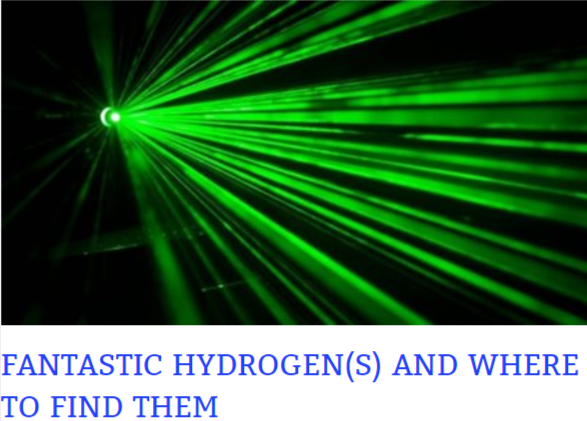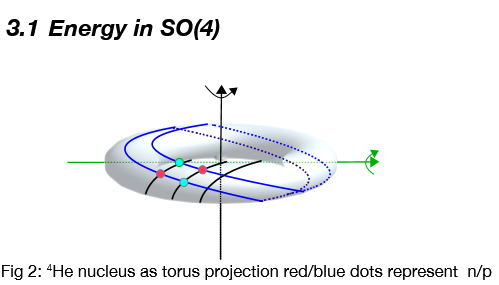
Wyttenbach Model Provides New Precise Mathematics For Universe Of Dense Matter
Physics Standard Model Was Created For Sparse Plasma Environments
Plasma environments are interesting for high energy physics, that’s not the environment we humans, and most of the universe inhabits.
Our universe and its atom-ecology is made up of dense matter.
Things get really interesting in realms of ultra-dense matter.

Dr. Jürg Wyttenbach
This post derives from my work with lab and scientific colleague, Dr. Jürg Wyttenbach of Switzerland, and his breakthrough new model that many believe will replace physics ‘Standard Model.’ His model describes and allows precise calculations that reveal the integration of matter and energy, and indeed gravity, in common terms of interwoven magnetic dimensions. This has wide-ranging use in understanding the nature of the universe at large and more the more specific ‘down to earth’ use in developing our practical heat-producing Atom-Ecology technologies.
Jürg with his mathematics along with my bench level experiments in ‘cold fusion’/’lenr’ is allowing us to prove that with the right tools and skills, acquired over decades of diligent work, the universe becomes a more understandable environment. Most certainly we are now able to show some of the myriad cold fusion reactions evidenced by quantifiable heat and distinctive weak but well-resolved gamma radiation spectra with precisely modeled predictability and explanation thanks to Jürg’s model and mathematics.
Dr. Wyttenbach is presenting his model at a scientific conference in Italy this week. This blog post begins with some of the introductory material from his conference presentation.
Old and New
It is well known that the so-called standard model of physics (SM) is incomplete and only works for so-called open space with 3 space dimensions and one time dimension. It has some merits in describing the outcome of particle collisions. But attempts to model dense matter by SM have failed. It is easy, thanks to Jürg Wyttenbach, to show that the mathematical space used by SM (SO(3)xSU(2)xU(1) ) has the wrong symmetry to successfully describe dense matter.
Some Of The Main Wyttenbach Model Achievements – Unification of all 4 forces
- Explanation of the gravitation mechanism
- Definition of the wave structure of particles, includes charge, radius, inner forces
- Calculation of nuclear masses, magnetic moments
- Wave structure explains fusion (Cold Fusion/LENR)
- Wave structure explains gamma emissions and energies
The Universe Is Dense Matter, Indeed Ultra-Dense Matter
Dense matter, respectively the energy that forms dense matter is best expressed by magnetic flux. Magnetic flux is coupling indirectly by induced (or virtual) currents that finally interact (attract/repel) according to the Biot-Savart law. Thus the magnetic coupling needs the mathematical combination of two (4D) rotations, which does not conform with simplified (3D,t) SM potentials.
Furthermore, it can be mathematically and physically shown that time on a nuclear/atomic level no longer is a free (open) dimension and only occurs as a frequency or wave number. A uniform time axis is a mathematical trick that allows us to model events that change the relationship between an old and a new state in a regular fashion. But from information theory, we know that there is no global time and we can only model phenomena, that are based on a partial order of events.

Atom-Ecology is far from alone in understanding ultra-dense hydrogen and its application to development of practical energy technologies. – Click to read more
Ed Note: Wyttenbach notes, in conversation, that he has found the Mills work is a ‘good start’ for this new physics, but that Mills would be well advised to broaden it to include the cold nuclear mechanisms facilitated by ultra-dense deuterium to deliver breakthrough ratios, up to 20x baseline, in the cold fusion fuels that Jürg and I develop and study at our modest Atom-Ecology laboratory in London.
Footsteps along the way.
Previously R. Mills, now of Brilliant Light Power in New Jersey, a company with scores of millions of Wall Street financing, found 30 years ago the first metric that allows us to convert mass at rest into a mass in a rotating relativistic frame. Because in mass aggregation (fusion) the average radius shrinks, the inward radial dimension must be included into the relativistic metric, which does not work with Einstein’s general relativity model as it cannot handle the center of mass being a pole. Thus the inward (to pole) length contraction is given by α and the finite! mass increase by 2π (Mills). The combination of these two factors is the well known and here renamed constant is called 2FC.
Visualization Of Higher Dimensions
The simplest geometric object that fulfills the requirements of a SO(4) 2 X 2 rotations coupled space is the so-called Clifford torus. This is the center symmetry space of SO(4).

Cold fusion using ultra-dense deuterium produces prodigious helium, along with heat and depending on the host materials gamma rays with specific energies. Visualizing how it works requires we work in higher dimensions. Starting with a Clifford Torus primes one’s imagination.
It has been shown that the Maxwell equations fundamental for dense matter calculations can be transformed to S3, (3 independent acting rotation dimensions!) which is a valid projection of the SO(4) Clifford torus that has 4 independent acting rotation dimensions. Thus from a mathematical point of view using Maxwell laws in higher dimensional space is valid. The Biot-Savart coupling of masses in SO(4) is of a circular nature.
New Constants
Because almost all states of dense matter are stable, and of course invariant over time, the basic relations between orbits and mass distribution can be given by Eigenvalues. Surprisingly there exist three constants that define almost all relations between physical quantities (mass=energy, force, orbits) in dense space. We named these constants after their primary function (Flux Compression) in fusion – 1FC, 2FC, 3FC. The leading number is the starting number of rotations. Flux compression/expansion is one way to express the fact, that the volume of dense mass can slightly shrink/expand due to fusion/aggregation.
This described NPP2 model or a more improved version of it will certainly replace the SM part for dense matter. Thus we warn people who have spent a large part of their lives in learning/teaching SM that they have to forget or put aside old knowledge. Even worse things could happen as soon as we come to understand, that a large part of SM is fringe science, that vastly ignores the reality of experimental data.
Just one simple example:
The standard model states that 56Fe should be magic nucleus and fusion should stop at 56Fe. The first problem is stating that 56Fe is a magic nucleus, this is completely wrong and the as it only holds as true if we try to fuse 56Fe with 56Fe. But this is not the way that fusion happens in the universe as the common fusion path is LENR, which is adding H/D to a nucleus. Thus fusion in a star does not stop at 56Fe, it stops when all Hydrogen is consumed. 56Fe as singular endpoint can (could!) only happen under a gravitational collapse.
Short Overview Of The NPP2.0 Model
(nuclear & particle physics 2.0)
- The following base assumption are made:
- Dense space is homogenous and has at least 6 dimensions
- Almost all energy is stored in rotations = magnetic flux
- Magnetic flux can be compressed/removed to release energy/mass
- Magnetic flux can be expanded/added to increase the energy/mass
- Stable particles have a base magnetic mass and carry (a minor part of) additional excess-energy
- The mathematical (base )space for the description of NPP2.0 is SO(4)
- In SO(4) space & time are homogeneous and time is of periodic nature with a maximal duration of 2*π, 4*π, 8*π depending on the number of coupled rotations.
- To increase a relativistic magnetic mass = adding one more flux-rotation, we must multiply the base magnetic mass by 1/α
- To convert (v → c) a non-relativistic mass to a relativistic one, we must multiply it by 2*π
- To find a non-relativistic rest-mass you must divide a relativistic mass by 2*π
- 1/α corresponds to the classic length contraction, 2*π to the maximal relativistic mass increase.
These rules are not complete as yet e.g. a relativistic mass is only once affected by the time parameter (2*π) and further mass increases only involve length contraction by 1/α or the 1,2,3 FC factors or the SO(4) metric factor.
Milestones:
- June 2017 : Work started: – data analysis
- 06.08.2017 : Strong force factor (3FC) found
- 11.09.2017 : First gamma spectra decoded 6Li,9Be
- 28.10.2017 : Strong coupling of gamma spectrum decoded
- 09.11.2017 : First Neutron radius.
- 15.01.2018 : Magnetic moment of 6Li,7Li
- 12.02.2018 : Magnetic moment of proton → proton charge radius
- 24.02.2018 : Neutron 4-He details
- 07.03.2018 : 28Si proof for 2FC/3FC mass factors, neutron “energy hole” wave
- 30.03.2018 : Pion,Kaon,Muon modeling
- 03.04.2018 : 3FC quantum structure of stable Isotopes with mass <= 32. 9Be magnetic moment.
- 30.04.2018 : Proton mass formula and proton & 4D radius from neutron radius
- 14.06.2018 : Neutron energy hole → 10B mass & magnetic moment, exact 4He mass.
- 02.09.2018 : Alpha particle mass defect anomaly that leads to gravitation constant
- 10.09.2018 : First exact Hydrogen model with all 10 digits matching
- 09.11.2018 : First ionization energy of 4He
- 13.01.2019 : proton-electron mass equivalence relation
- 30.01.2019 : Orbit formula for exact neutron, deuterium, 4-He mass, Hydrogen ionization
- 18.02.2019 : Derivation of gravitation constant
- 24.05.2019 : Proton inner force equation that explains charge generation
- 12.07.2019 : Orbit formula for dense hydrogen (H*-H* / D*-D*)1
For a deeper read into the Wyttenbach Model you may find some of his papers on ResearchGate. For those unable to be in Italy this week to speak with him in person about the model below is a link to a PDF (draft) of his conference presentation.
Great read. I’m so happy to see this. Wyttenbach is really progressing fast.
My continued best hopes and regards to all of you.